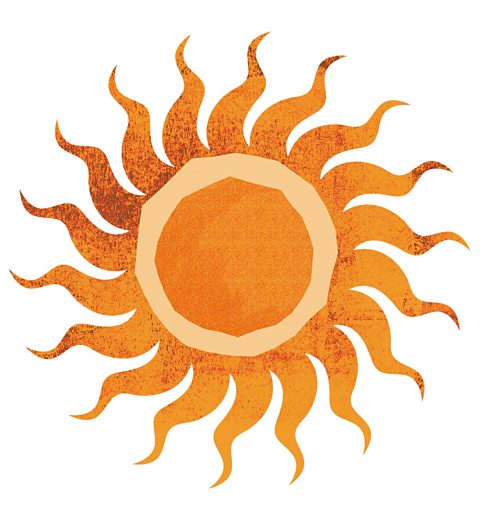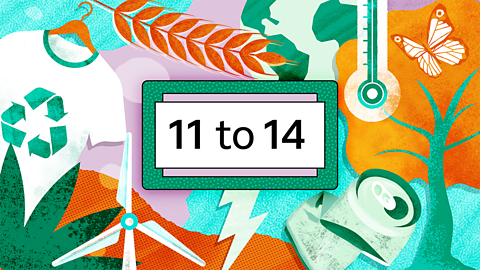
Welcome to The Regenerators.
What is global warming?
Global warming is often referred to in the news or in conversations about the weather.
Environmental scientist Laura Young explains how human activity is causing changes in the Earth’s atmosphere and what impact this has on the climate and living things.
Watch this video to find out more
Laura
Global warming is the unusually fast increase in the Earth’s average surface temperature and is caused by greenhouse gases like carbon dioxide and methane being released into the atmosphere. When sent out into the air, these potentially harmful gases are known as emissions.
Throughout history, the Earth has warmed and cooled over long periods of time. But in the past 100 years, human activity has caused the Earth’s atmosphere and our climate to change more quickly.
When fossil fuels, like oil, gas and coal, are burned, lots of greenhouse gases are released into our atmosphere changing the way it’s made up.
All of these greenhouse gases absorb heat so they act like a blanket which wraps around the Earth, trapping energy from the sun and keeping the Earth or 'globe’ warm.
On top of this, when we change the surface of the Earth, particularly removing trees and natural landscapes and replacing them with concrete buildings, roads or other structures, we remove some of the Earth’s best natural defences- known as ‘Carbon Sinks’.
These are all the things that pull-out carbon from the atmosphere to help keep the planet cool.
Imagine you organised a football match and on one team ‘team carbon’ you put 11 players but on the other team ‘team Earth’ you keep taking off its defenders making it increasingly hard for team Earth to defend its goal.
In the last 100 years the Earth has warmed, on average, between 1 and 1.2 degrees Celsius which might not seem like a lot, but when the Earth is warmed even slightly, we begin to see big impacts. Like thermal expansion which happens when water gets warmer and swells.
This, along with the melting of ice sheets and glaciers, causes sea levels to rise and leads to flooding, erosion and loss of habitat.
Many of the climate changes we are seeing are happening faster now than we’ve ever seen in thousands of years, it is happening all over the world but some parts of the world do feel the impacts more than others.
We’ve seen effects like; melting ice caps in the Arctic and Antarctic, more frequent tropical storms, heatwaves, droughts and fires threatening water and food supplies… Which all sounds very scary, big and out of our control I know!
But if society can reduce the amount of carbon dioxide being put out into the atmosphere, we can help slow down global warming.
Going back to our football match - to even the playing field you need to take some of ‘team carbon’s’ players off to give ‘team earth’ a chance.
So what does that actually look like? Well on a bigger scale our governments have some tough decisions to make to change how reliant the world is on fossil fuels for our energy and transport.
As well as reducing emissions from farming and other industries.
But as individuals we can also make everyday changes; like choosing public transport instead of driving, reducing how much air travel we do and buying less new stuff so that fewer items need to be made.
By making different choices, we can help to reduce carbon emissions and slow down Global Warming.
Definition
Global warming is the unusually fast increase in the Earth’s average surface temperature and is caused by Greenhouse gasesThe gases responsible for global warming - carbon dioxide, methane, nitrous oxide and CFCs (chlorofluorocarbons). like carbon dioxide and methane being released into the atmosphere, known as emissionsA potentially harmful gas that is produced and sent out into the air, for example carbon dioxide..
Summary

- The greenhouse gases in our atmosphere help to keep Earth warm by absorbing heat from the Sun, trapping it like a blanket. The increasing concentration of greenhouse gases in the atmosphere means that more heat is being trapped and Earth is getting warmer, like a greenhouse.
- Over the past 100 or so years, the temperature of the Earth has increased by an average of between 1 and 1.2 degrees Celsius.
- To slow down global warming we need to reduce our greenhouse gas emissions. We can do this by switching to renewable energy sources, as well as making small changes like using public transport and buying fewer items.

Teacher notes
A set of teacher notes are available. They include geography and science curricula links, and suggest how the clips might be used in a classroom.
Download or view the briefing notes online.
There's more to learn
Green Themes Explained
GREEN CLASSROOM

Green Scenes - classroom activity
GREEN CLASSROOM

Guides for 11-14s
THE REGENERATORS

More from The Regenerators
BBC BITESIZE


